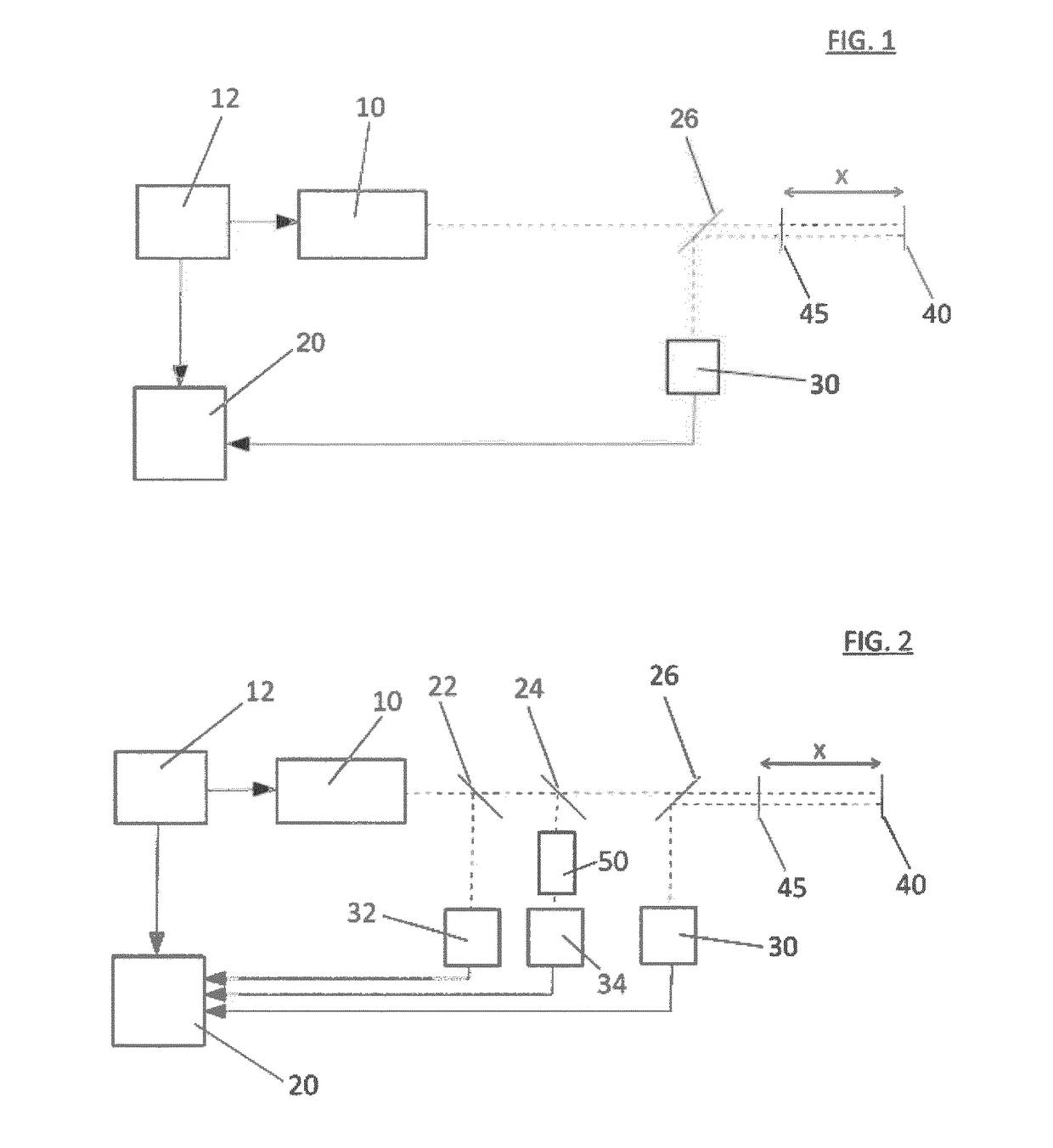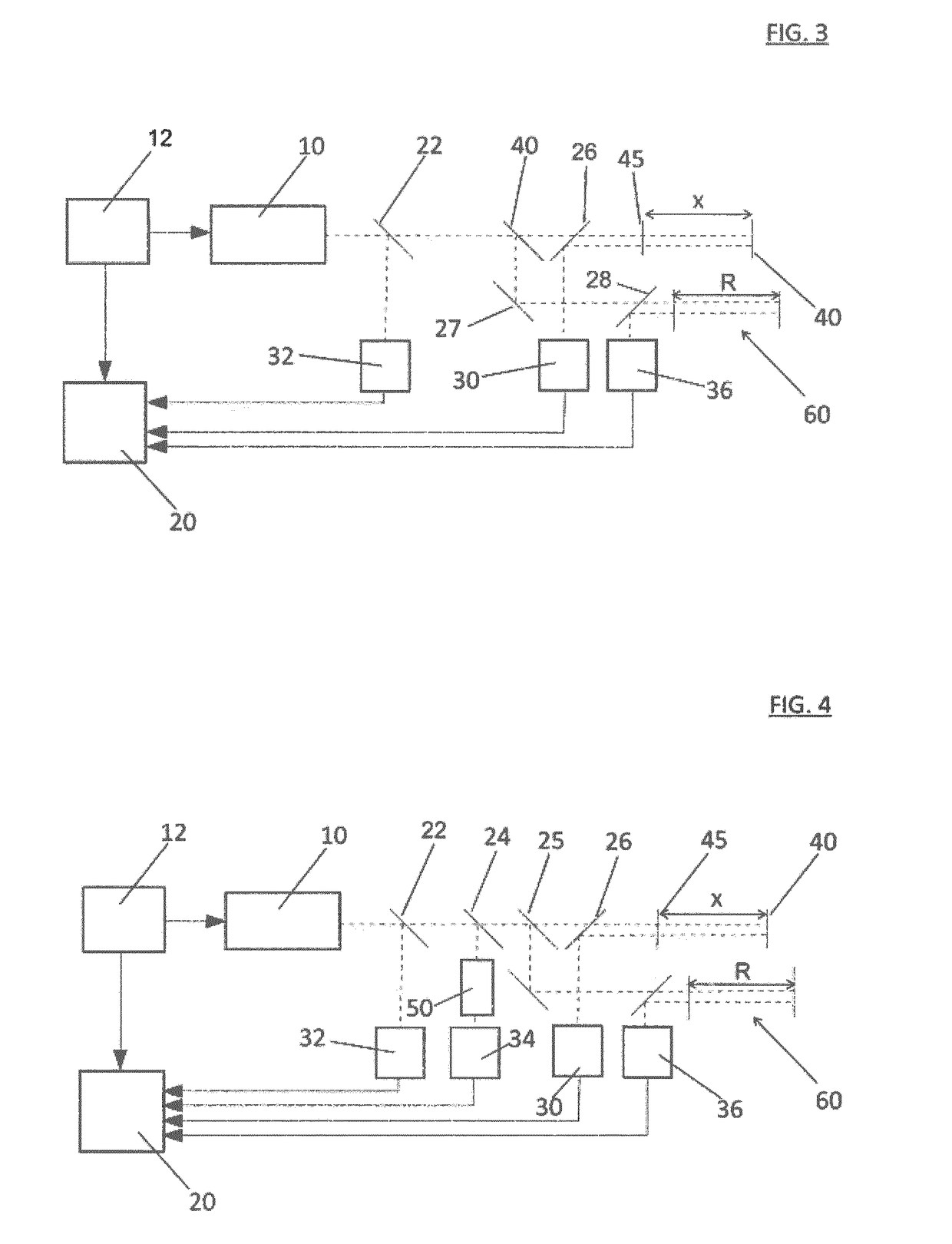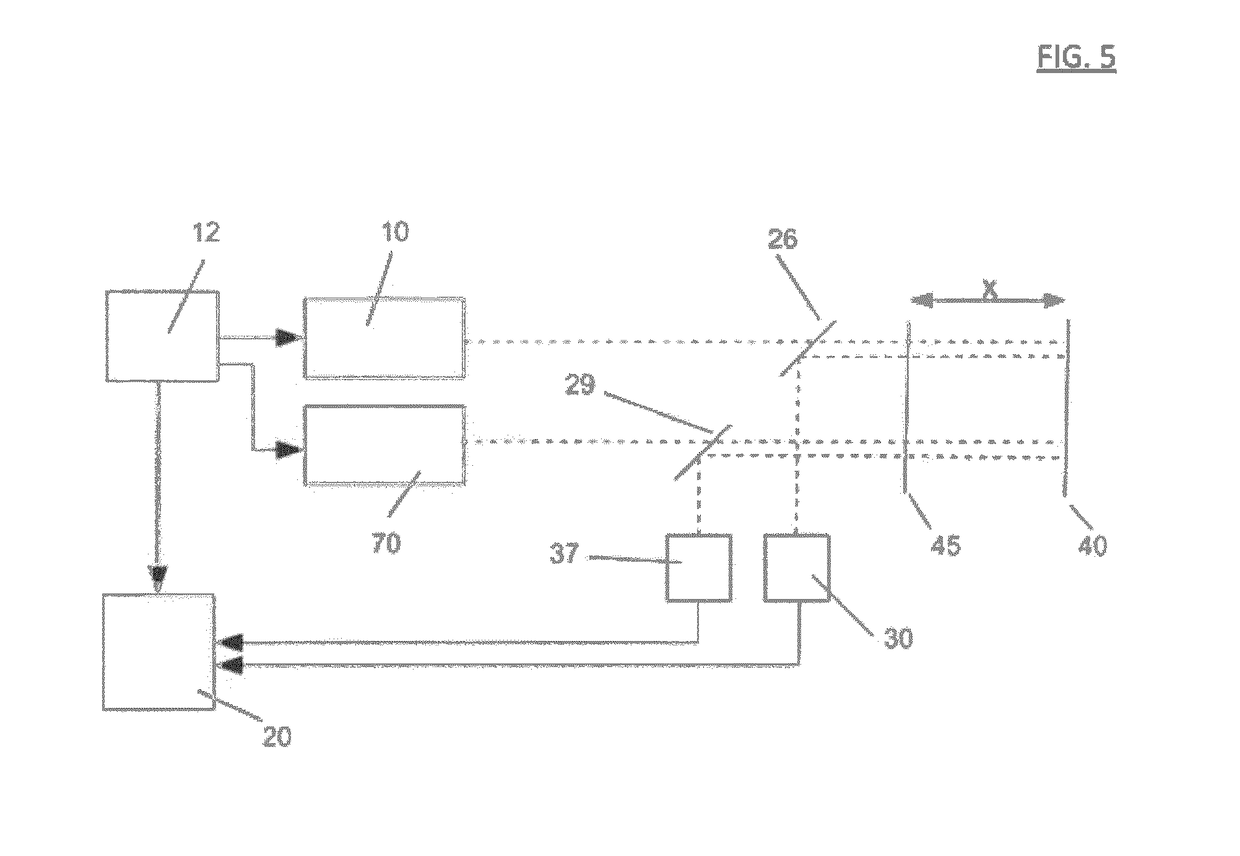Memeasuring a cavity by means of interference spectroscopy
a technology of interference spectroscopy and cavity, which is applied in the direction of interferometers, using reradiation, instruments, etc., can solve the problems of requiring a large investment in resources to calibrate wavelength, weak dependence of signal on movement of objects, and inability to distinguish in this manner between changes in the length of the cavity and changes in other optical parameters. , to achieve the effect of increasing the accuracy of analysis
- Summary
- Abstract
- Description
- Claims
- Application Information
AI Technical Summary
Benefits of technology
Problems solved by technology
Method used
Image
Examples
Embodiment Construction
[0036]FIG. 1 shows a schematic representation of a first embodiment example of a device according to the invention for the interferometric determination of the mechanical / geometric and the optical properties of a cavity. Here, as in the following illustrations, the basic principle of the construction of the device is shown. Appliances for calibration, power supply, temperature control etc are not shown, nor are optical ancillary appliances such as apertures, collimators etc. For better understanding, moreover, the emitted and incident beams are shown in the drawings next to each other. In fact, however, usually these beams are not separated geometrically.
[0037]A tuneable laser, e.g. a DFB laser diode, which preferably radiates visible or infrared light, serves in the shown embodiment examples as a coherent light source 10 for beam generation. A modulation unit 12 is envisaged for frequency tuning. The tuning here can take place e.g. thermally by means of temperature control, electri...
PUM
 Login to View More
Login to View More Abstract
Description
Claims
Application Information
 Login to View More
Login to View More - R&D
- Intellectual Property
- Life Sciences
- Materials
- Tech Scout
- Unparalleled Data Quality
- Higher Quality Content
- 60% Fewer Hallucinations
Browse by: Latest US Patents, China's latest patents, Technical Efficacy Thesaurus, Application Domain, Technology Topic, Popular Technical Reports.
© 2025 PatSnap. All rights reserved.Legal|Privacy policy|Modern Slavery Act Transparency Statement|Sitemap|About US| Contact US: help@patsnap.com



